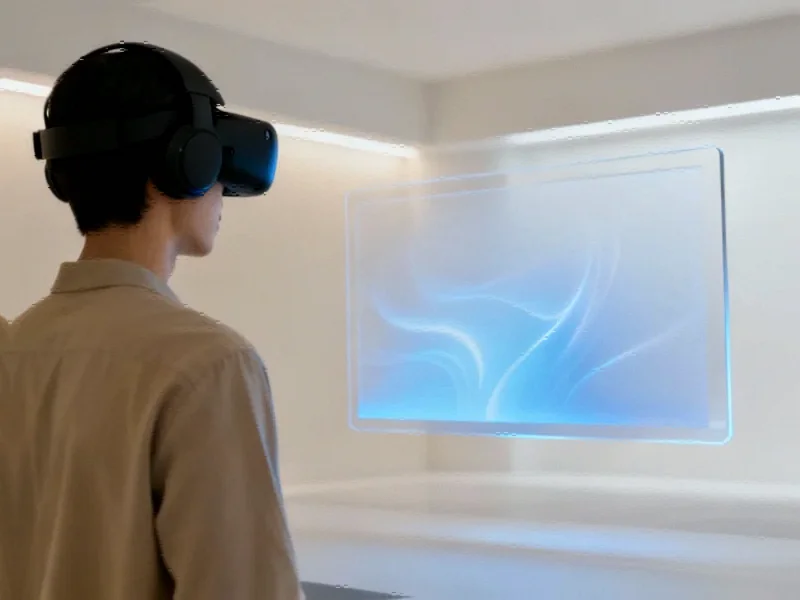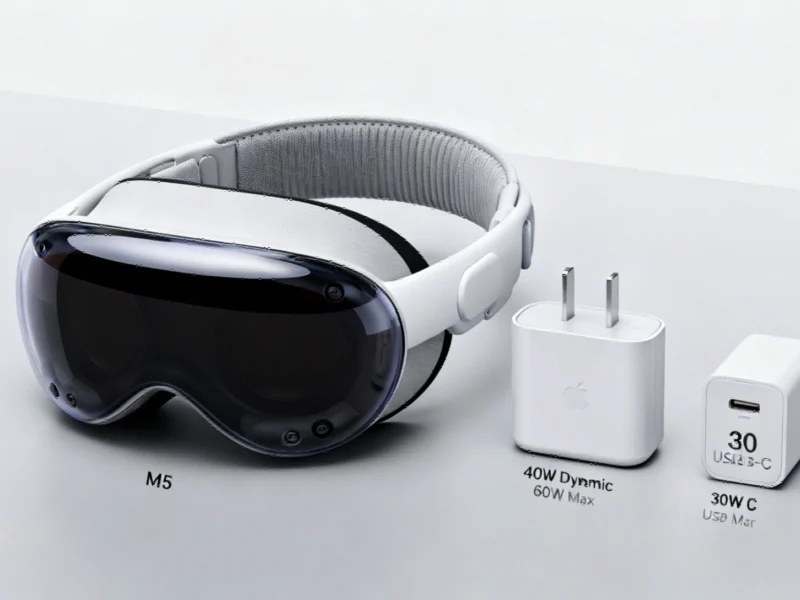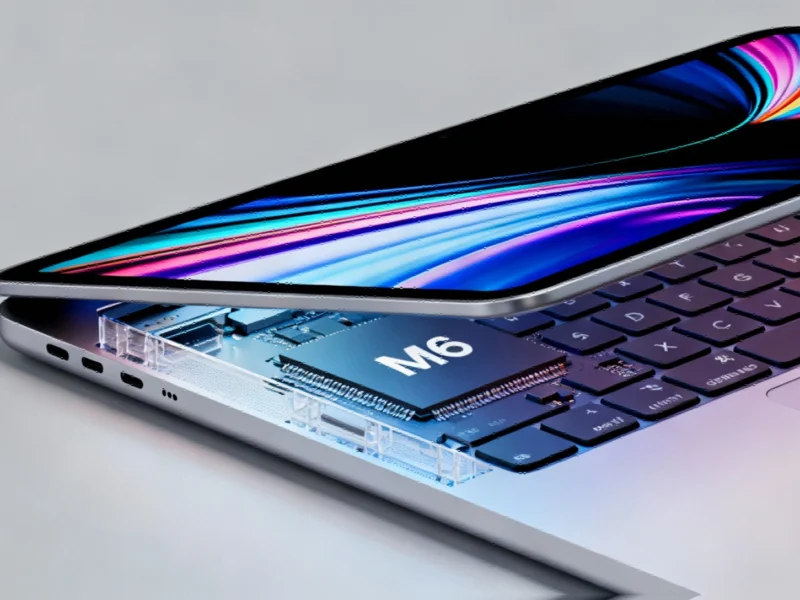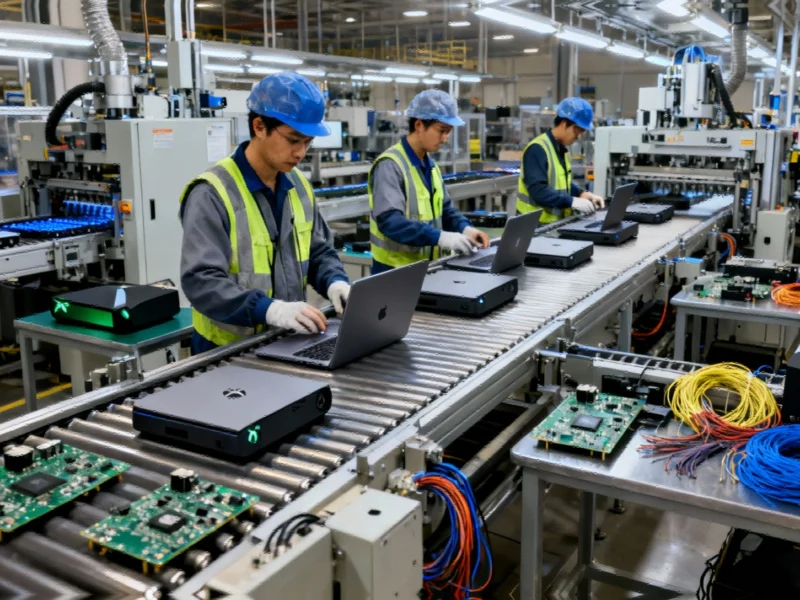The Unfulfilled Promise of Spatial Computing
Apple’s announcement of a Vision Pro model featuring the powerful M5 chipset represents a significant hardware upgrade, yet it fails to address what many consider the device’s fundamental identity crisis. While the headset boasts impressive specifications, its continued separation from the macOS ecosystem undermines its potential as a true productivity tool. The Vision Pro’s evolution from M2 to M5 chips demonstrates Apple’s commitment to raw processing power, but without meaningful integration with macOS, it risks remaining an expensive accessory rather than becoming the revolutionary spatial computer it purports to be.
The Wearable Mac That Never Was
From the earliest leaks about Apple’s mixed reality ambitions, the inclusion of M-class chips sparked speculation that the Vision Pro would essentially function as a wearable Mac. These processors, which power Apple’s most capable computers and tablets, suggested the headset could handle demanding macOS applications in a spatial environment. The addition of the specialized R1 chip to manage XR processes further supported this theory, theoretically freeing the M-series chip to focus on computational tasks.
Instead, Apple positioned the Vision Pro primarily as an extension of the iPad ecosystem, filling it with tablet-optimized applications rather than desktop-class software. This decision baffled many industry observers who saw the hardware’s potential for more substantial computing tasks. The headset’s ability to function as an external display for Macs feels particularly limiting—a concession that the device cannot replace traditional computing despite its advanced technology.
The M5 Upgrade and Missed Opportunities
The transition to the M5 chip represents more than just a performance boost—it’s a symbolic alignment with Apple’s professional computing lineup. The timing of this upgrade, coinciding with the release of M5-powered MacBook Pro models, makes the separation between visionOS and macOS even more perplexing. Users now have access to desktop-level processing power within the headset, yet they’re restricted to mobile-optimized applications.
Industry developments in computing hardware continue to push boundaries, with competitors exploring new form factors and use cases. The Vision Pro’s current implementation feels conservative compared to these innovations, particularly given its premium positioning in the market.
As Apple’s Vision Pro upgrade sparks debate over macOS integration, many are questioning why the company continues to treat its spatial computer as an isolated platform rather than embracing it as the future of personal computing.
The Justification for macOS Integration
Integrating macOS applications into the Vision Pro environment wouldn’t require revolutionary changes to Apple’s software strategy. Simple 2D floating windows, similar to how users interact with applications on traditional computers or when using the headset as an external display, would immediately transform the device’s utility. This approach would leverage existing software while demonstrating the unique advantages of spatial computing for productivity.
The potential benefits are substantial: working in true 3D space, reducing dependency on multiple physical monitors, and creating immersive computing environments that adapt to user needs. These advantages could justify the Vision Pro’s premium price point for professionals who currently require multiple high-end displays and powerful computers.
Recent technology in the mixed reality space continues to evolve rapidly, with companies exploring various approaches to blending physical and digital workspaces. Apple’s cautious strategy stands in contrast to these market trends toward more integrated computing experiences.
The Broader Context of Computing Evolution
Apple’s hesitation to fully merge its computing platforms reflects broader challenges in the technology industry. While companies push hardware capabilities forward, software integration often lags behind. Related innovations in display technology, processor design, and interface paradigms continue to advance, yet creating cohesive user experiences across device categories remains elusive.
The tension between mobile and desktop computing paradigms isn’t unique to Apple. Throughout the industry, we see companies struggling to balance the simplicity of mobile interfaces with the power and flexibility of desktop environments. The Vision Pro sits at the intersection of these competing philosophies, potentially offering a path toward resolution if Apple embraces its role as a unifying platform.
Looking Toward the Future
As Apple prepares to release the M5-powered Vision Pro, the company faces critical decisions about the device’s identity and purpose. Without meaningful macOS integration, the upgraded model may struggle to justify its existence beyond niche applications and early adopters. The hardware capabilities are clearly present—the question is whether Apple will leverage them to create the spatial computer many hoped for from the beginning.
The computing landscape continues to evolve, with innovations emerging across multiple sectors. As these industry developments progress, the pressure on Apple to deliver a cohesive vision for spatial computing will only intensify. The company’s approach to the Vision Pro will likely influence how personal computing evolves in the coming decade, making its software strategy as important as its hardware advancements.
While the current trajectory suggests Apple will maintain the separation between visionOS and macOS, many hope the company will recognize the opportunity to redefine personal computing. The Vision Pro has the potential to be more than an expensive accessory—it could become the computer that adapts to our spaces rather than forcing us to adapt to it.
This article aggregates information from publicly available sources. All trademarks and copyrights belong to their respective owners.
Note: Featured image is for illustrative purposes only and does not represent any specific product, service, or entity mentioned in this article.



